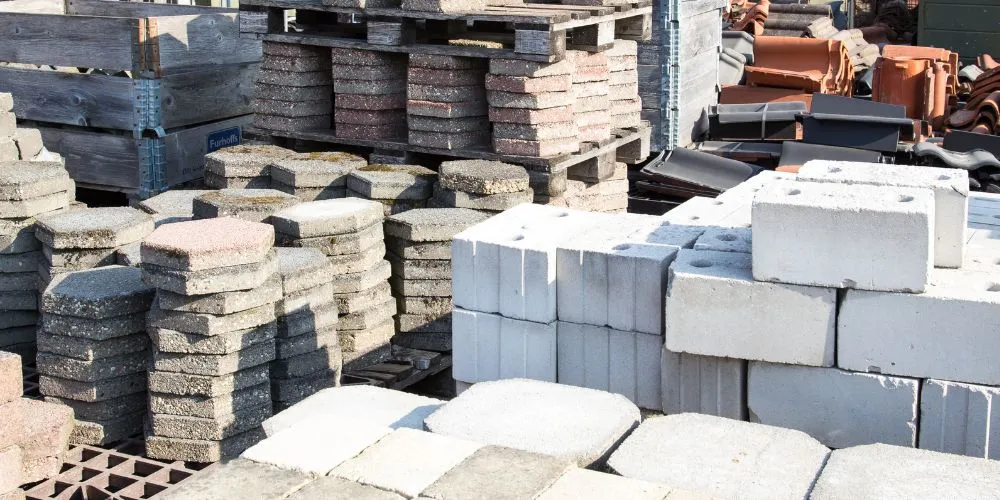Green building materials have emerged as a cornerstone in sustainable construction, revolutionizing how we approach structures’ design and development. These materials prioritize environmental responsibility, energy efficiency, and reduced carbon footprints. In this comprehensive article, we delve into the evolution and significance of green building materials, exploring the diverse categories, innovative technologies, and their pivotal role in fostering a more sustainable and eco-friendly built environment.
Evolution of Green Building Materials
The historical evolution of green building materials can be traced back to ancient civilizations that employed natural, locally sourced materials in construction. However, it wasn’t until the latter half of the 20th century that the modern green building movement gained momentum. The energy crises of the 1970s spurred a renewed focus on sustainable construction, leading to the development and adoption of materials that prioritize energy efficiency, durability, and minimal environmental impact.
Early efforts in green building materials often revolved around incorporating recycled and reclaimed materials. Salvaged wood, recycled steel, and reclaimed bricks gained popularity as builders sought alternatives to resource-intensive conventional materials. These materials reduced the demand for virgin resources and showcased the potential for sustainable practices in the construction industry.
Technological advancements have propelled the green building materials industry into a new era of diverse, innovative, and eco-friendly options. From high-performance insulation materials to advanced solar panels integrated into building facades, the spectrum of green building materials has expanded to address various environmental and energy-related considerations. These advancements enhance the sustainability of buildings and contribute to the overall resilience and efficiency of structures.
Categories of Green Building Materials
Green building materials encompass many categories, each addressing specific environmental considerations and contributing to sustainable construction practices. Understanding these categories is vital for making informed choices in building design and construction
- Recycled Materials: Recycled materials are repurposed from post-consumer or post-industrial waste. Recycled steel, glass, and concrete exemplify materials that have been diverted from landfills and reintegrated into the construction process, reducing the environmental impact of extraction and manufacturing.
- Renewable Resources: Materials derived from renewable resources, such as bamboo, cork, and sustainably harvested wood, are integral to green construction. These materials are sourced in a manner that ensures replenishment and minimal ecological disruption, aligning with the principles of sustainability.
- Energy-Efficient Insulation: Green building materials extend to energy-efficient insulation options like recycled denim, cellulose, and rigid foam made from plant-based polymers. These materials enhance the thermal performance of buildings, reducing the need for excessive heating or cooling and minimizing energy consumption.
- Low VOC Paints and Finishes: Volatile organic compounds (VOCs) contribute to indoor air pollution. Low VOC paints and finishes, made from natural ingredients and water-based formulas, provide aesthetically pleasing alternatives that support healthier indoor air quality, benefiting both occupants and the environment.
Role in Sustainable Construction
Green building materials play a pivotal role in advancing sustainable construction practices, aligning with the global commitment to reduce the environmental impact of the built environment.
- Energy Efficiency: Using energy-efficient materials, such as insulated windows, reflective roofing, and advanced lighting systems, enhances the energy performance of buildings. It reduces operational energy costs and contributes to a lower carbon footprint over the structure’s lifecycle.
- Reduced Environmental Impact: By opting for materials with lower embodied energy and utilizing recycled or rapidly renewable resources, green construction minimizes the environmental impact associated with material extraction, manufacturing, and transportation. This approach promotes responsible resource management and conservation.
- Improved Indoor Air Quality: Green building materials contribute to healthier indoor air quality, particularly those with low VOC content. It is especially crucial for occupant well-being, as poor indoor air quality has been linked to various health issues. Improved ventilation and non-toxic finishes create a more comfortable and sustainable living or working environment.
Challenges and Future Prospects
Despite the progress in green building materials, challenges persist, and ongoing innovation is essential to address emerging issues and further enhance the sustainability of construction practices.
- Cost Considerations: The initial costs associated with some green building materials can be higher than traditional alternatives. Overcoming this challenge requires a shift in perception and increased awareness of the long-term benefits, including energy savings and reduced maintenance expenses.
- Standardization and Certification: Standardizing green building practices and establishing reliable certification systems are essential for ensuring the credibility of green building materials. Stricter regulations and widespread certification adoption can foster industry confidence and promote consistent sustainability standards.
- Technological Innovation: The future of green building materials lies in continuous technological innovation. Advancements in materials science, nanotechnology, and sustainable manufacturing processes will drive the development of new, more efficient, and environmentally friendly building materials.
Conclusion
Green building materials represent a transformative shift in the construction industry toward sustainability and environmental responsibility. From ancient practices of using natural materials to modern innovations in recycled and renewable resources, the evolution of green building materials mirrors our commitment to creating structures that harmonize with the environment. Overcoming challenges and embracing continued innovation will ensure that green building materials remain integral to the global movement toward a more sustainable and resilient built environment.











